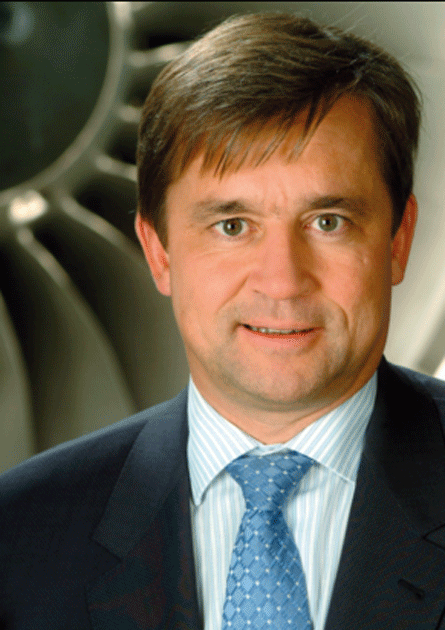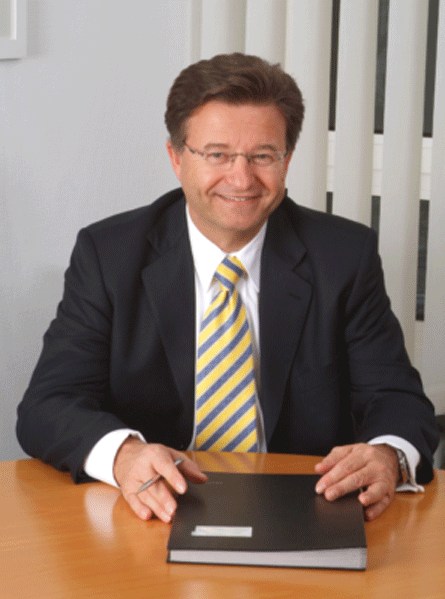Will MTU and Rolls-Royce Deutschland devise technological strategies for a green future - and beat the weak dollar?
MTU Aero Engines and Rolls-Royce Deutschland have always prided themselves on their innovative approaches to problem solving, but they will need to draw on all of their expertise to successfully confront the two overriding challenges they now face.
Critical to their long-term successes are pending decisions on which technologies will win out in the race to develop the "green" engines that will power the next generation of Airbus and Boeing narrowbody airliners. Meanwhile, they must adopt the right strategies to mitigate the potentially devastating impact of the persistently weak US dollar.
MTU is heavily backing long-standing partner Pratt & Whitney's geared turbofan (GTF) concept, which has been picking up substantial momentum in the market following its selection by Mitsubishi Heavy Industries (MHI) and Bombardier Aerospace for pending regional jet programmes.
"For us, the GTF engine technology is of premier significance, and that's why we're spending the major part of our research and development funds on it," says MTU chief executive Egon Behle.
FIRM GROUND
"The decisions of MHI and Bombardier in favour of the GTF seem to prove we're on firm ground with our thinking. And we are confident that we will have an excellent concept to offer once the decisions of Airbus and Boeing will be due," he adds.
In another vote of confidence, Airbus has agreed to test-fly the GTF on an A340 later this year, although the airframer cautions it is making no commitment at this stage to equip any of its airliners with the new powerplant.
R-R Deutschland, established 17 years ago in eastern Germany, originally as a joint venture with BMW, is not yet concentrating on a specific engine architecture for future narrowbodies, as it awaits further guidance from the airframers.
"We at R-R want to keep our technological options open," says Dr Michael Haidinger, president of R-R Deutschland and chief operating officer for R-R corporate and regional engine programmes. "I think we have solutions for the different questions. As soon as we know what the question is, I think we can answer precisely. One technology route is 'open rotor', which we think it is a step change with respect to performance and fuel efficiency."
 |
|---|
©Rolls-Royce DeutschlandHaidinger:keeping options open |
R-R Deutschland's latest two shaft engine is the BR725, which has been selected to power the recently launched Gulfstream G650 business jet and had a successful first run in April. Based at Dahlewitz near Berlin, R-R Deutschland has been designated by its UK parent company as the group's "centre of excellence" for two-shaft engines.
Although based on a conventional architecture, the BR725 promises a substantial performance improvement over the established BR710, which equips both the Gulfstream G550 and rival Bombardier Global Express long-range business jet families. The BR710's larger sister, the BR715, is no longer offered following the demise of the Boeing 717 regional airliner programme.
"The BR715 is out of production right now so when it comes to new applications in the corporate/regional market, we have offered our RB282, a new centreline engine designed for this market segment," says Haidinger.
"Our first customer is Dassault as we won the competition for their new super-mid-size jet. We believe that the technologies we are using for this new centreline engine have the potential to power more products in the corporate and regional market."
R-R has previously indicated that in addition to open rotor, it is looking at whether its unique three-shaft engine architecture could be applied to future narrowbodies. Also to be determined is whether a new engine would be offered by R-R itself, or via the successful International Aero Engines consortium, in which it is a partner alongside P&W, MTU and Japanese Aero Engines.
"I think it depends again on the requirements from the market and from the airframers, and once we know what the product solution is we also can assess at that time what route to market we want to take," says Haidinger.
MTU's Behle is unambiguous is in his assessment: "For us, this much is clear, the engine to power the A320 and 737 successors ought to again come from IAE. The final engine choice is up to the customer, but on our part, we're making an all-out effort to have a major role in that engine."
 |
|---|
©MTU Aero EnginesBehle: GTF technology of premier significance |
R-R recently announced it was establishing an assembly line for Trent-family widebody powerplants in Singapore, and Haidinger says all options are on the table in terms of the RB282 production location. The final selection will not be made until next year, but Haidinger acknowledges that the need to "dollarise" more production work to reduce costs will be a key factor in the decision.
"We are continuously looking at opportunities for where we can best place our supply chain, including assembly, so that means also for the 282 there are alternatives currently under investigation," he says. He says the site for assembling the RB282 has not been finally decided, "but one possibility is in one of our new plants, in Virginia, USA".
R-R already manufactures AE3007 turbofans in Indianapolis as a result of its Allison Engine takeover several years ago, while MTU is considering several options to counter the weak dollar, including acquisitions in the USA and possibly Asia.
"Fact is, the aviation industry is trading in dollars and we will necessarily have to cope with the dollar's volatility," says MTU's Behle. "What we are doing is shifting financial obligations, wherever possible, into the dollar-denominated region. We are maintaining and increasing substantial supplier relationships with the dollar zone and are even operating a small factory in the USA."
NATURAL HEDGING
He adds: "We are building up our low-cost location in Poland that shall be operational in the first half of 2009. In fact, we have covered a relatively high portion - 70% - of our sales through natural hedging. We are currently looking at options to expand our involvement in the USA, perhaps also through acquisition. We have a presence in Asia as well, where we're also looking at various options."
MTU managed to secure rights to assemble both the A318's P&W PW6000 turbofan and the A400M military transport's TP400 turboprop in Germany, in Hanover and Ludwigsfelde, respectively, but both programmes are facing difficulties.
The PW6000 has not sold well, while the multi-partner and technically challenging TP400 development programme is running behind schedule.
"At the time the PW6000 was being developed, low maintenance cost was the dominant design criterion," says Behle. "Oil prices at the time still were moderate. But that has changed profoundly. Technically, the engine is world class, except that current fuel costs are not exactly helping to sell it.
"All participants in the A400M programme are working at full steam to get an outstanding aircraft flying. Earlier ramp-up of serial production would of course contribute to our business figures and we have adjusted our production schedule to the new timeline. Remember that programmes like these are unfolding over many, many years."
Source: Flight International
















